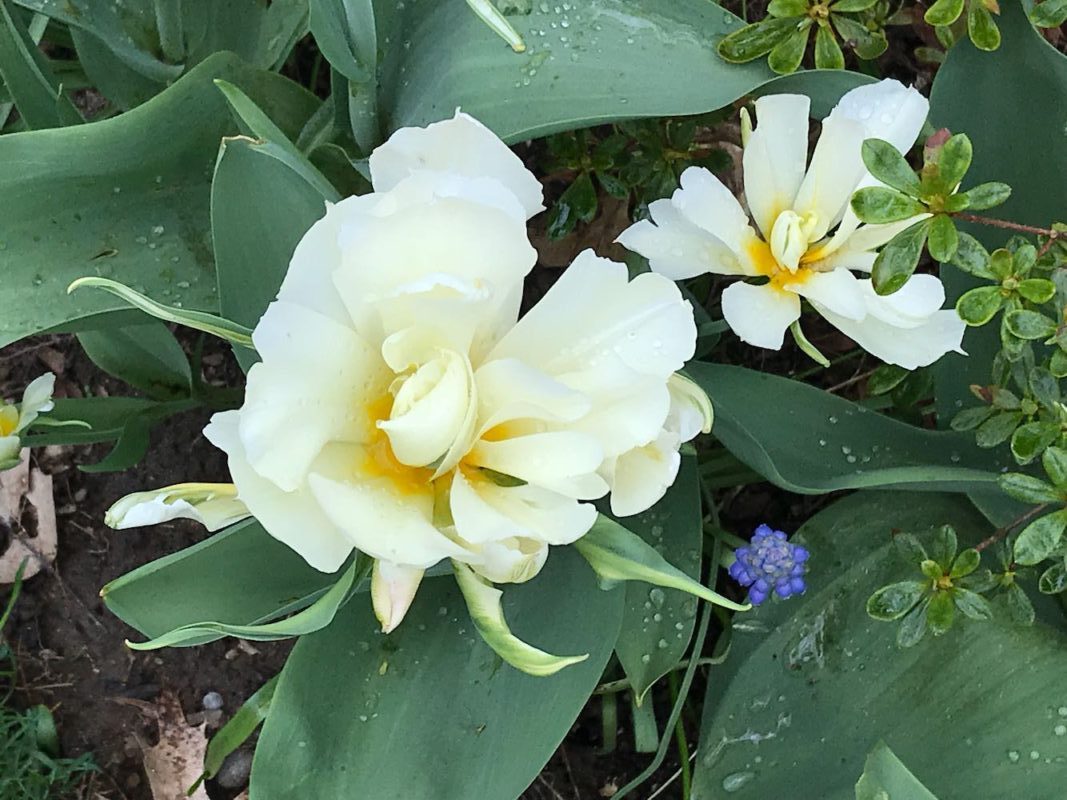The Springs of Hope
I can’t explain it. No sooner have the ferns begun to wilt, the hostas tinge brown and the birch bend to bronze, then I start thinking about tulips.
The glossy plant catalogs will soon rain their offerings on my doorstep. The mesh bags of brown knobs, so close to onions they must be distant cousins, will jostle each other on the wood tables at the farm stand. The double whites and the Empress, the brilliant streaked yellows and the staunch, intense grape hyacinths, like pre-teen girls at a Friday night dance, all silently entreating, “choose me!”
On my distanced walks in the park these days, cottonwood seedlings drift and puffs of spent Joe Pye shake to the ground. Soon, the wild asters and goldenrod will begin their own subtle surrenders. Where human hands leave well enough alone, the wilds see to their own renderings and quiet harvests.
Until recently, I’ve thought of harvest as an act of gathering – a culling and cutting and picking and hoarding for what through hard work and stewardship I have “earned.” Tomatoes and basil, career satisfactions, the sought-after contentments of a certain age.
But these days it is hard to avoid the realization that much of what we plant, invest in, hope for and expect – in the public as well as the private realms – doesn’t follow our blueprints or flow charts, fantasies or fondest dreams.
As my bright, intensely intelligent college students look out over a landscape of collapsing economies and political fracturing, the upending of their career dreams and the security of families that have sacrificed to get them where they are, this lesson is harsh to witness. How to persuade them that individual effort and integrity will stand the test of time?
I am beginning to realize that the wisdom of age is to understand — and perhaps to teach — that “harvest” may in many cases not mean what we thought it did — cumulative value. It may, in fact, mean, “to yield.” Harvest is, after all, the “yield” of the fields, nature’s bounty rendered in fullness to nurture the cycles of growth. If we turn this ancient noun, “yield,” into an action, we find our hidden kinship with the cottonwood and the goldenrod that release their seeds to the wind. If we learn to let go, at least a little bit, what we have been conditioned to gather in, we join the rest of the created world in a different dance of being.
To let life emerge as it will, in spite of our personal programs for happiness, to measure value not in the results, but in the unfolding, the becoming — this may well be the wisdom of the harvest.
Trust is essential to this challenge. So is honoring the oldest teaching of all, which admonishes us to serve life, not some distorted, disguised effort to undermine it by pulling our own hidden levers of power and control.
Planting, encouraging, waiting through the long dark season. taking the long view — all of these are the disciplines demanded of tulips, or any long-term garden, orchard, or relationship. In many ways, the blooms are just the icing on the cake, the grace-filled gift that rewards our perseverance, patience, and hope.
Of course, as soon as I think about tulips, I remember the bunny. Given what she did to my tulip bed last year, it is almost enough to set the whole project aside.
But of course this would be unthinkable. I will order my usual mixed colors, with additional whites. I can’t explain it. But maybe I don’t have to. I just have to accept the unconscious springs of hope as the best gift of harvest time.





No Comments